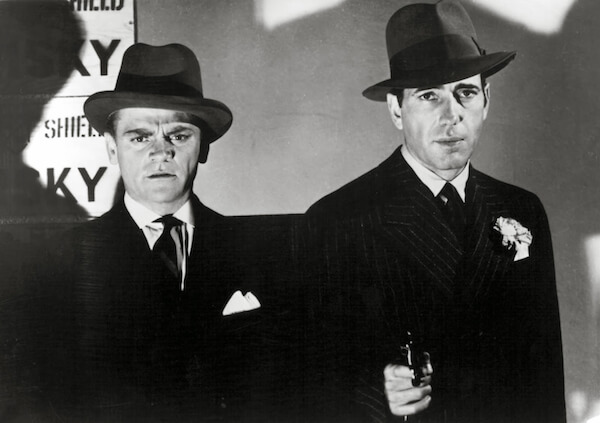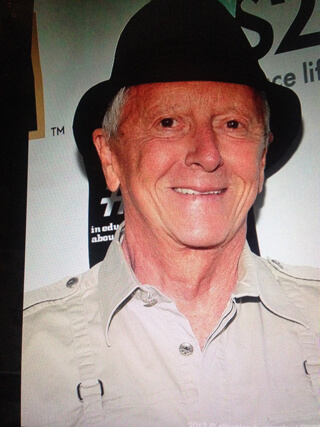One of the most highly anticipated books by many in our community has finally hit the stores. It’s “Mommie Dearest Diaries,” by my dear friend actress Rutanya Alda. In that ultimate cult film, she played Carol Ann, faithful lifelong amanuensis –– aka slave –– to Joan Crawford, embodied by that fire-breathing and most difficult of divas Faye Dunaway, someone able to put fear into the heart of even Bette Davis!
Whatever possessed Alda, who’d already been in such classic films as “The Deer Hunter,” “The Long Goodbye,” and “The Fury,” to keep a daily record of the nightmare that was working with this star, the effort has proved an incredible boon for all who cannot get enough of the movie, not to mention Alda herself, who it turns out is an excellent writer. She really knows where the bodies are buried, and “Mommie Dearest Diaries” is one of the most laceratingly real, compelling, and moving showbiz memoirs I’ve ever read.
Dunaway’s endless off-screen shenanigans included demanding that her then-lover be listed as a producer, although he had contributed absolutely nothing; re-taking numerous times the infamous scene where she slaps Carol Ann (and Alda had the red cheeks to prove it); literally brutalizing little Mara Hobel, who played her daughter Christina as a child; and causing legendary costume designer Irene Sharaff to walk off a film for the first time in her long career. It was Sharaff who dressed Alda so beautifully for Crawford’s wedding scene that an insecure Dunaway had her cut from the proceedings (“You look too good”). The costuming legend famously said of Dunaway, “You can enter her dressing room, but throw a piece of raw meat in there first.”
“Mommie Dearest”’s Rutanya Alda on Faye Dunaway; downtown sister act; vintage theater at its best
An excerpt from the diary more or less gives the great Sharaff, for whom the annual New York theater costume awards are named, the last word: “She says she likes everyone, except Faye. She’s never worked with anyone as crazy in all her years in the business. She tells me Faye is on drugs, that’s why her behavior is so erratic. I ask cocaine? She says she doesn’t know but believes that a couple of years ago it was heroin. She says her behavior is completely instant gratification –– she wants it now, right away, like an infant… She says everyone hates her so much they’re just waiting for her to fall on her face so they can all laugh at her.”
And there’s plenty more! Brava Rutanya, I know it wasn’t an easy road into the bookstores and Amazon.com, but you did it, lady, and aren’t you glad you never showed your galleys to Faye, who has now lifted her famous taboo on anything “Mommie”-related to work on her own book? She might have lifted a lot from you, as well!
What kind of genius is master puppeteer and New York treasure Basil Twist? The witty, mind-boggling effects he achieves in his show “Sisters’ Follies: Between Two Worlds” (Abrons Arts Center, 466 Grand St. at Pitt St., through Oct. 31; abronsartscenter.org) couldn’t really have cost that much, yet they out-dazzle anything on Broadway or in Vegas. It’s a wacky, unhinged tribute to the sisters Lewisohn, Alice (Joey Arias) and Irene (Julie Atlas Muz), who founded the very theater this show resides in as the Neighborhood Playhouse, and are conceived (possibly amid clouds of contraband substances) as eternally bickering co-dependents –– think Big and Little Edie Beale, with grand pretensions of Art with a capital A, rather than showbiz.
Muz is a relatively new face (and pair of exposed boobies) to me. She’s a highly accomplished, graceful, and comic dancer, like Ruth St. Denis, only reincarnated for the set of “The Night of a Thousand Stevies (Nicks).” Besides the Lewisohns, Arias and Muz essay various roles in the highly ambitious, delightfully obscure historical pageants the sisters produce, with narcissistic Alice always cast as, say, the Queen of Egypt, and Irene as her ubiquitous, more simply garbed slave girl.
A terrific small orchestra aptly accompanies these hilarious, beyond-camp shenanigans, and Arias, although perhaps a smidgen under-rehearsed, brings his unique singing voice and lovably outrageous persona, making the moment when he warbles “Midnight at the Oasis,” while astride a giant camel in the Sahara, perhaps the most memorable stage visual of 2015.
For a second, I panicked when I heard that the estimable Mint Theater company was ceasing operations on 43rd Street. I was relieved to discover that they are merely moving locations under the intrepid leadership of founder Jonathan Bank. The company left its old location in a blaze of glory, however, with its revival of Harold Chapin’s 1911 comedy “The New Morality.” Chapin was an inordinately gifted, Brooklyn-born British playwright, who sadly died at the age of 29 during World War I. His play, a wonderfully elegant and droll study of a marriage slightly in trouble, set aboard a posh houseboat, was also surprisingly deep in its observations, in that early suffragette era, about the position of women, around whom he lovingly centered all of his work.
On one of those miraculously designed sets his company is known for, Bank smoothly directed what I expect to be the best farce on stage this year. His cast was utter perfection, starting with the quite divine Brenda Meaney as the soigné yet suspicious wife who gets things rolling when she calls her neighbor a bitch for trifling with her all too smitten husband (a terrifically stodgy and bewildered Michael Frederic). I have always worshipped the late, great American light comedienne Ina Claire and lament that few today possess her chic, elegant technique and innate wit. Meaney, swanning about in Carisa Kelly’s superb, Poiret-esque costumes, strongly evoked Claire’s style and, even, delicate pathos, and there can be no higher praise than that.
Still, Meaney momentarily had the show stolen from her by Ned Noyes, brilliant as the drunken silly ass of a husband to her rival who delivers Chapin’s deepest revelations about the opposite sex. Young Welsh actress Clemmie Evans brought lovely innocence to her role of friend to the heroine, reminding me of the delightful Jane Carr in films like “The Prime of Miss Jean Brodie” (as Mary McGregor) and “Something for Everyone.”
My other go-to stage group, to whom I run when the unaccountably acclaimed vicissitudes of current dramaturgy –– such as “The Flick”, “Clybourne Park,” and (shudder) “Something Rotten” –– proves too much to bear, Metropolitan Playhouse, is having quite the season. Its founder, Alex Roe, invited me to conduct a lively talk back on October 4 with the cast and director of “The Awful Truth,” the 1922 play by Arthur Richman that provided the source material for Leo McCarey’s very loose 1937 film adaptation, one of the absolute screen classics of romantic comedy.
I’m thoroughly excited about the company’s upcoming production, Pulitzer Prize-winner Susan Glaspell’s 1931 “Alison’s House,” which was inspired by the death of poet Emily Dickinson and how her family dealt with it and with her legacy. Glaspell, so admired in her time, is nearly unknown today, a victim of changing commercial theatrical taste and, undoubtedly, chauvinism. Her work, with its sheer depth, contextual intelligence, and febrile sensitivity, is every bit the equal of, and sometimes quite superior, in its perfectly gauged subtlety, to that perennially over-produced, more noisy triumvirate of Eugene O’Neill, Tennessee Williams, and Arthur Miller.
The original Broadway cast of “Alison’s House” was striking for the presence of that grand, unapologetically dyke doyenne of the stage Eva Le Gallienne and her lover Josephine Hutchinson, who signed a Warners contract and went to Hollywood in 1934. She became, I think, the first lesbian leading lady in studio talking pictures, starring in “Oil for the Lamps of China,” “The Story of Louis Pasteur,” and “Son of Frankenstein.” She and Le Gallienne met in 1926 when she became a member of Eva’s Civic Repertory Theatre. Their affair broke up Hutchinson’s marriage to stage director Robert Bell, and a snarky press at that time viewed this as a major scandal, dubbing her “ Le Gallienne’s Shadow.” Their relationship evidently endured even through Hutchinson’s subsequent two marriages, and both of them lived to a ripe old age, with Hutchinson dying in 1998 at 94, and Le Gallienne in 1991 at 92.
Contact David Noh at Inthenoh@aol.com, follow him on Twitter @in_the_noh, and check out his blog at nohway.wordpress.com.





































